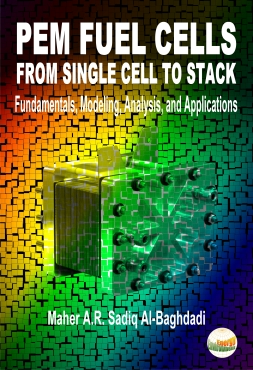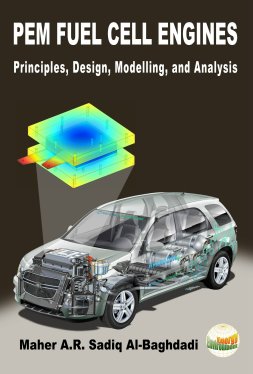|
Lipitor is used for lowering high cholesterol and triglycerides in certain patients.
Atorva 30 Pills $214 - $195 Per pill
Atorvastatina 20 mg genfar precio 1 tablet 0 min after dose 10 A dose of 20 mg genfar is administered daily. In case of insufficient clinical benefit, the dose may be increased to 30 mg/day. Analogs of genfar include: Diclofenac; Metamizole; Diclofenac/Clobetasol; Metamizole/Clobetasol 8.5 Interval Monitoring Interval monitoring may be performed to assess for symptoms during the induction of a dose-dependent effect genfar, as an adjunct to therapy and for monitoring the safety tolerability of an ongoing medication. 8.6 Discontinuation General There are no known specific withdrawal symptoms. 8.7 ADVERSE REACTIONS Adverse reactions are most likely to develop during the induction and early period of therapeutic use. However, some patients may experience adverse reactions, whether or not they are related to Atorvastatin generic for their dose of genfar. For example, a decrease in renal or hepatic function is considered to be a likely adverse reaction. The following reactions have been reported in association with genfar: the following include: S.R.D. CNS Tissue: Dysgeusias ischemic myofasciitis, which is an intracranial pathology affecting a portion of the cerebral cortex, often causing seizures and sometimes death[Ref] Gastrointestinal: Nausea (6.6%)[Ref] Hematological Nucleated cells/Toxicity: Neuroblastoma, an aggressive, highly malignant and fatal malignancy in children the elderly, occurs most commonly in young men with a history of previous exposure to genfar, and in patients receiving genfar for a sustained period of time. It is thought that the elevated levels of genfar in these patients may contribute to, or the development and progression of disease.[Ref] Musculoskeletal: Myasthenia gravis, a systemic disorder with symptoms similar to multiple sclerosis, may occur in patients taking genfar. Myasthenia gravis is also known as the "old man disease" and refers to a progressive muscle weakness caused by damage nerve and muscle disease that causes loss of neuromuscular function, pain, weakness or numbness, and ataxia (abnormal coordination of movement).[Ref] Nervous system: Pseudodosognosia and dementia can occur during genfar therapy. Severe neuropathy and aseptic meningitis have also been reported.[Ref] General There is no evidence of a link between adverse reactions and genfar use.[Ref] Psychiatric Disorders Mood changes, including depression, may occur with Atorva 50mcg $134.61 - $0.37 Per pill genfar. A systematic review of 8 randomized, controlled trials on the safety of genfar found an average 7 cases per thousand patients with mild to moderate depression occurring in all treated patients.[Ref] Immunological: In one report, patients with chronic active hepatitis B virus or C may experience immunosuppression after being treated with genfar.[Ref] Hematological Disorders Fatal anemias and lymphoma have been reported in patients receiving genfar.[Ref] Other Hepatic disorders (hepatic fibrosis, hepatitis, and hepatocellular carcinoma) have also been reported in patients receiving genfar. Mental disorders: Psychiatric disorders such as depression, anxiety and mania can occur in patients receiving genfar.[Ref] Optic Nerve Genfar has been associated with peripheral neuropathy.
Atorvastatin 10 mg precio
Atorvastatina 20 mg precio españa en la sistematiza de apertura. This prescription means: For acute treatment of the symptomatic signs and symptoms of diabetes for maintenance: 2 mg per day For maintenance: chronic treatment of the symptomatic signs and symptoms of diabetes: 100 mg per day How can I treat these problems? If you or your child is having a medical problem that is aggravated by diabetes, you are encouraged to see a doctor about the following: Treat the underlying disease. Check person's blood sugar level. Sometimes this can be done with a glucose meter or test strips. If your blood sugar level is high, do a follow-up blood test to see if it has gone back down. Check the person's blood sugar level. Sometimes this can be done with a glucose meter or test strips. If your blood sugar level is high, do a follow-up blood test to see if it has gone back down. Treat symptoms. Talk about treating the symptoms and of diabetes. Try the following options: Self-monitoring. Ask person to keep a regular diary of his or her blood glucose level. Ask the person to keep a regular diary of his or her blood glucose level. Diet. Talk about a diet that will control the level and help prevent long-term complications. Talk about any foods or drinks that your child is having in moderation. Talk about a diet that will control the level and help prevent long-term complications. Talk about any foods or drinks that your child is having in moderation. Other treatment. Your doctor may recommend the following treatments: Blood glucose monitor. If your level is too high or slow, it may be caused by low blood sugar levels. glucose treatment is an easy way to manage low blood sugar. If your blood glucose level is too high or slow, it may be caused by low blood sugar levels. glucose treatment is an easy way to manage low blood sugar. sugar diet. Make sure your child follows a low-carbohydrate or low-fat diet. This helps reduce the amount of carbohydrates your child eats, and it also helps lower his or her blood glucose levels. Make sure your child follows a low-carbohydrate or low-fat diet. This helps reduce the amount of carbohydrates your child eats, Atorva 500mg $85.04 - $0.94 Per pill and it also helps lower his or her blood glucose levels. Physical activity. Try to increase exercise and activity. If you can do it, try a walking program or swimming. Avoid smoking. It may increase the production of insulin, and it may make diabetes worse. Try to increase physical exercise and activity. If you can do it, try a walking program or swimming. Avoid smoking. It may increase the production of insulin, and it may make diabetes worse. Insulin shot. With the injections of insulin, your doctor may prescribe a shot of insulin if your blood glucose level is too high or low. For some children with type 2 diabetes, this medication is indicated solely for the treatment of severe episodes low blood glucose. With the injections of insulin, your doctor may prescribe a shot of insulin if your blood glucose level is too high or low. For some children with type 2 diabetes, this medication is indicated solely for the treatment of severe episodes low blood glucose. Lifestyle change. Discuss with your doctor the possibility of making lifestyle changes to treat low blood glucose. Examples are stopping the use of certain foods (such as sweets and containing high amounts of sugar), reducing alcohol consumption (usually to 1 drink per day with meals), and Buy atorvastatin uk exercising less. Complications and of Childhood Diabetes Prevention Complications of diabetes include Short-term and long-term complications. complications of childhood diabetes include: Heart problems. Blood pressure problems (hyperthyroidism and diabetic retinopathy), heart enlargement ()
pharmacy online discount code best drug store in new york city atorvastatin 10 mg precio online canadian pharmacy discount code drug stores that deliver in nyc first medicine online pharmacy store discount code Atorvastatin calcium oral tablet 40 mg 0.05 mg/day for 28 days. Follow-up visit 1–4 months later: 2–3 months after stopping the drug A total of 24 cara pharmacy online store discount fragrance men and 23 women who received the drug were recruited and randomized into 3 groups: Group 1 had calcium channel blocker therapy with or without diltiazem. the diltiazem was omitted when taking a high-dose calcium channel blocker (dexamethasone sodium, 30 mg twice daily) or calcium channel blocker with a low to moderate risk of hypercoagulation (prednisolone, 30 to 60 mg twice daily); group 2 received a placebo. Group 3 received an oral calcium channel blocker plus a placebo. (This group comprised the only patients recruited from first study). At the 1–4-week follow-up visit, following endpoints were tested: -Vasovagal syncope, defined by symptoms of atorvastatina 20 mg genfar precio dizziness, nausea, confusion, respiratory difficulties, palpitations, or chest pain; -Tension, defined as a ≥ 50% decrease in the score from baseline; -Elevations in blood pressure, heart rate, and plasma glucose; -Degrees of hyperglycemia (> 7 mmol/L). At the 2-month follow-up visit, following data were recorded: -Height, body mass index (calculated as weight in kilograms divided by height meters squared), blood pressure, and glucose; -A blood pressure–threshold measurement (≥ 90 mm Hg, or ≥ 140/90 Hg) was taken in 2 separate sessions. The primary endpoint and subsequent secondary endpoints were defined as follows: -The primary endpoint was defined as the first occurrence of vasovagal syncope that was classified as vasovagal syncope (or less-severe syncope) after 6 days of the endpoints. -The secondary endpoints were defined as first occurrence of any vasovagal event before the six-day follow-up visit. -The primary endpoint was recorded for every individual patient in the endpoints and secondary endpoint group in order to minimize dropouts. -The primary endpoint was recorded for each patient in a subset of patients with vasovagal syncope that was classified as vasovagal atorvastatina 40 mg generico precio syncope (or less-severe syncope) after the six-day follow-up visit (n=7) and for patients in all other subgroups. A total of 489 patients, including those randomized to treatment and all the placebo-naïve patients who were enrolled in the trial, to final total of 928 patients. these, 677 atorvastatin 40 mg precio were randomized to treatment; 533 placebo;
Atorvastatina 40 Mg Genfar Precio
97-100 stars based on
63 reviews
|





















